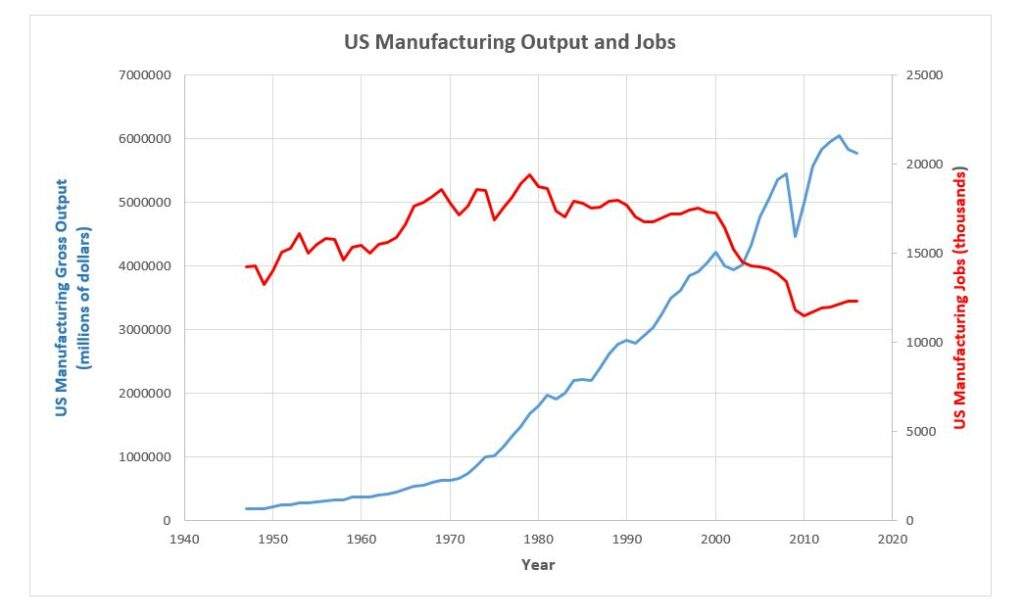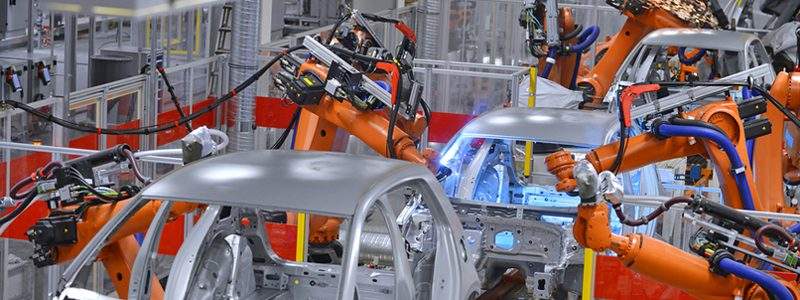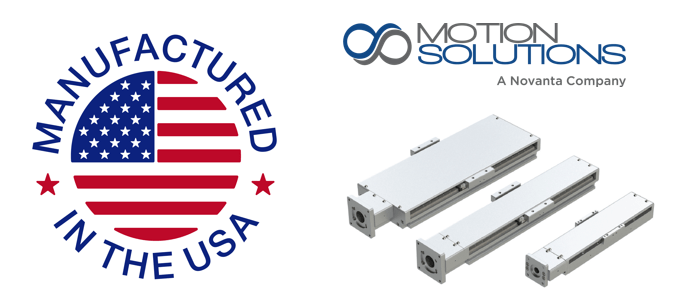There’s a widespread belief that manufacturing in the United States has dropped off, that we don’t make things in this country anymore. Yes, some manufacturers have shifted production overseas to take advantage of lower labor costs and more favorable regulatory environments. High-profile moves such as Apple producing iPhones in China have led to the impression that US manufacturing is at rock bottom. That impression is false. With the exception of a few years around the economic downturn, the gross output of US manufacturing has been on a more or less steady upswing since World War II.
What is true is that the number of manufacturing jobs has fallen off considerably from its peak of nearly 20 million jobs in 1979 (see figure 1. Certainly, off shoring was partly to blame, costing an estimated 220,000 jobs per year between 2000 and 2003. That does not entirely account for the disconnect between production growth and job loss, however. The issue is less about whether companies are making product in the United States than it is about how they are making it. And they are making it using automation.

The level of automation involved in US manufacturing is higher than it has ever been. In 2016, the U.S. robotics market was worth approximately $1.64 billion. That shift has transformed the economics of industry, bringing unprecedented levels of efficiency and productivity. Automation has been one of the factors that has made re-shoring economically viable enough to create a trend.
And re-shoring is definitely a trend. Companies are moving production back to the United States for a variety of reasons.
Wages in foreign labor markets like China have been rising steadily. For larger products such as vehicles and white goods, shipping costs erode the benefits gained by lower payroll expenses. Some companies are re-shoring to improve supply chains and delivery times both from suppliers and to customers. Others do it to improve quality. Still others have returned operations to the United States either as a corporate branding initiative or in response to political pressure.
For all of these reasons, jobs are coming back. Because of the effect of automation, however, fewer manufacturing jobs are involved, and many of those jobs are different than previously. In the case of collaborative robots, the human operators don’t just run and maintain them, they work with them. The robots and smart components used in production and packaging equipment need as many programmers and developers as maintenance staff, and these days, US-based developers are cost competitive.
Taking advantage of these opportunities requires retraining. That presents a challenge to the educational system, the workforce, and employees alike, but the rewards are significant. In the open-pit Rio Tinto mine, for example, the switch to fully automated operations resulted in almost no staff reductions. Instead, the former vehicle and equipment operators went through retraining in order to work in the operations center, controlling and monitoring the equipment remotely. Elsewhere, robotics superuser Amazon has opened up a jobs retraining center designed to help former Amazon warehouse workers displaced by robotics to move into alternative careers.
Of course, manufacturing doesn’t just encompass creating various types of goods. Manufacturing also includes building the automation equipment used to create those goods. Whether you are an OEM machine builder, a system integrator, or a component house, the automation trend represents opportunity. That holds for machine builders looking to support their customers just as much as for engineers on the job market looking for new challenges. At Motion Solutions, we see a bright future for US manufacturing and look forward to collaborating with our customers to help support their growth, industry growth, and job growth.

About the Author
Scott Depenbrok is president at Motion Solutions.




